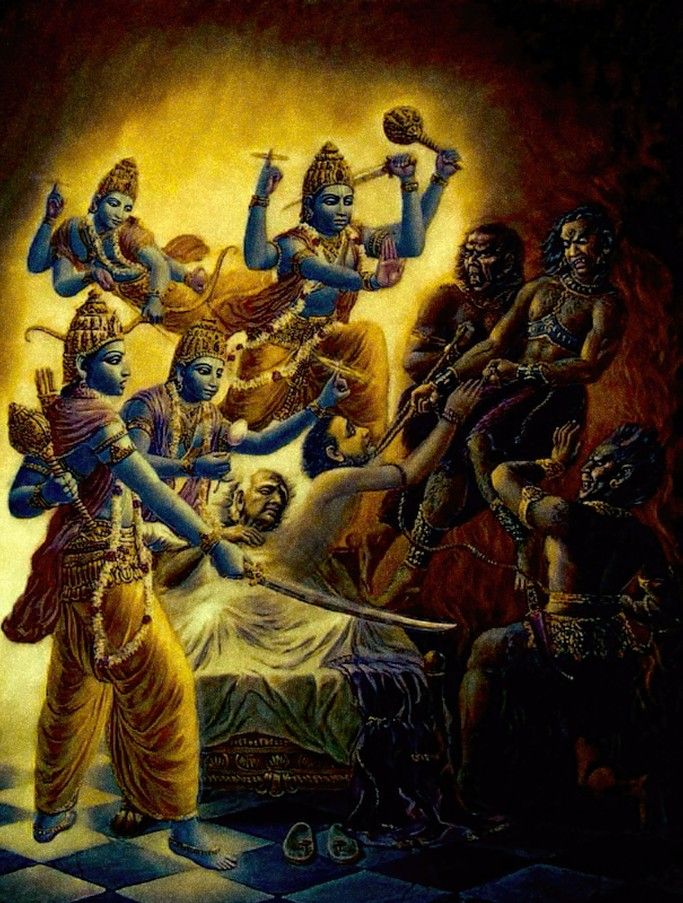Elevation at Death (Part One)
There are different kinds of transcendentalists who are called yogīs – haṭha-yogīs, jñāna-yogīs, dhyāna-yogīs, and bhakti-yogīs – and all of them are eligible to be transferred to the spiritual world. The word yoga means “to link up,” and the yoga systems are meant to enable us to link with the transcendental world. As mentioned in the previously, originally we are all connected to the Supreme Lord, but now we have been affected by material contamination. The process is that we have to return to the spiritual world, and that process of linking up is called yoga. Another meaning of the word yoga is “plus.” At the present moment we are minus God, or minus the Supreme. When we add Kṛṣṇa – or God – to our lives, this human form of life becomes perfect.
At the time of death we have to finish that process of perfection. During our lifetime we have to practice the method of approaching that perfection so that at the time of death, when we have to give up this material body, that perfection can be realized.
prayāṇa-kāle manasācalena
bhaktyā yukto yoga-balena caiva
bhruvor madhye prāṇam āveśya samyak
sa taṁ paraṁ puruṣam upaiti divyam
“One who, at the time of death, fixes his life air between the eyebrows and in full devotion engages himself in remembering the Supreme Lord, will certainly attain to the Supreme Personality of Godhead.” (Gītā 8.10)
Just as a student studies a subject for four or five years and then takes his examination and receives a degree, similarly, with the subject of life, if we practice during our lives for the examination at the time of death, and if we pass the examination, we are transferred to the spiritual world. Our whole life is examined at the time of death.
yaṁ yaṁ vāpi smaran bhāvaṁ
tyajaty ante kalevaram
taṁ tam evaiti kaunteya
sadā tad-bhāva-bhāvitaḥ
“Whatever state of being one remembers when he quits his body, that state he will attain without fail.” (Gītā 8.6)
There is a Bengali proverb that says that whatever one does for perfection will be tested at the time of his death. In the Bhagavad-gītā Kṛṣṇa describes what one should do when giving up the body. For the dhyāna-yogī (meditator) Śrī Kṛṣṇa speaks the following verses:
yad akṣaraṁ veda-vido vadanti
viśanti yad yatayo vīta-rāgāḥ
yad icchanto brahmacaryaṁ caranti
tat te padaṁ saṅgraheṇa pravakṣye
sarva-dvārāṇi saṁyamya
mano hṛdi nirudhya ca
mūrdhny ādhāyātmanaḥ prāṇam
āsthito yoga-dhāraṇām
“Persons learned in the Vedas, who utter oṁ-kāra and who are great sages in the renounced order, enter into Brahman. Desiring such perfection, one practices celibacy. I shall now explain to you this process by which one may attain salvation. The yogic situation is that of detachment from all sensual engagements. Closing all the doors of the senses and fixing the mind on the heart and the life air at the top of the head, one establishes himself in yoga.” (Gītā 8.11–12)
To Be Continued…..









Comments & Discussion
11 COMMENTS
Please login to read members' comments and participate in the discussion.